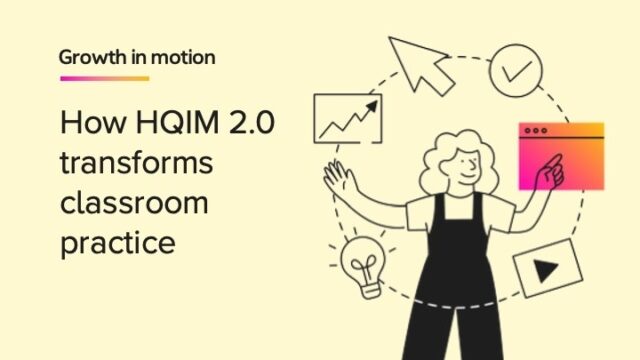
I realize that the title of this blog post is visually drastic. But after doing research, thinking about my own encounters as a teacher, and discussing the statistics out loud with my teacher friends, I’ve concluded that we need to recognize the urgency of developing our own comfort with the subject of bullying and view it as more than just a need to check off a bullying lesson for the month. If one in five students between the ages of 12 and 18 are reporting being impacted by bullying, that is too many. The more I dug into other statistics, the more I hurt.
The Girl in the Mirror
Teachers, start here: self-reflection and personal narrative. To tell you that I have never been picked on would serve no other purpose than to shut down the conversation so that I would not have to think back on the “fat” jokes I faced. Yes, I was not immune to them, and to this day, I loathe that word. However, I was not relentlessly teased to what I categorize as being bullied by definition. According to Merriam-Webster, the word bullying is defined as the abuse and mistreatment of someone vulnerable by someone stronger, more powerful. The word vulnerable is what brought the emotion as I read stories of the effects of bullying.
I asked in a Twitter poll how many fellow educators had been bullied. More than half shared that they had been bullied. Wow! I want to talk with them further about this and how they can get the courage to tell their stories. Because the reality is their stories need to be shared even if you have to also realize that you participated in a mean-girl lunch table a couple of times in high school. There is no reason to give more power to someone who already feels stronger than everyone else.
There is a more comprehensive and intentional solution than the everyday, “Be yourself. You are an amazing person. Middle and high school are the most challenging years, and when you grow up, you will not even think back on this.” (Not true.) It comes down to facts, advice, and resources.
Facts to Know
I am a fan of DoSomething.org, so when I Googled bullying facts, the organization’s position on the social issue populated as a top search find. Think about the aforementioned statistic—one in five kids in the middle and high school age range are bullied. That means in the average high school of 752 students, 150 have been bullied. DoSomething.org has 11 facts on bullying that we all need to know, but here are a couple more that shook me:
- Which grade level faces the most bullying? 31% of bullying is reported in sixth grade.
- What is one of the most harmful and worrisome outcomes of bullying? The belief that your bully has the most influence over how others think of you.
To read the remaining facts from DoSomething.org, click here.
Advice and Bullying Prevention Organizations
In researching, I discovered that most teachers shared not feeling well trained in an anti-bullying curriculum. I do see bullying prevention hotline posters in every school I visit, and there are always brochures available when you enter the office. But I encourage each teacher to easily share hotlines and advice with their students in a comfortable conversation without moments of hesitation or a lack of knowledge.
Begin with your own research for advice. I found several sites that provide advice and lessons for teachers. To report bullying takes courage, but the real work is moving beyond the emotional stress. Here is a start-up list for you:
My classroom environment was always one of acceptance—risk-free and empathy-filled. Even still, there were times when words and actions caused pain. One way that I worked on modeling intent and setting the tone was to practice no sarcasm. Sarcasm is considered a voice of humor but not necessarily one that is easily understood in the ages of social development. It actually creates an atmosphere of hostility.
I always talk about sharing what works, so check out my classroom tried-and-worked tips to improve social learning and decrease bullying:
- Before immediately responding to a student who is bullying, listen to what is being said. Then, breathe for three seconds. This time will allow you to redirect without coming across as sarcastic or rash, or with a tone that is belittling. Definitely do not roll your eyes at the student who is bullying. Rolling eyes is nonverbal sarcasm.
- Listen to cafeteria noise and take a pulse as students enter the first class after lunch. Implement a mindfulness technique such as breathing exercises, doodling, or meditation.
- Incorporate read-alouds that allow for classroom discussions and emotional interactions to develop empathy, and discover literary heroes to whom students can relate. Start with a book that helped you. For me, it was Blubber by Judy Blume.
- Class favorites: Freak the Mighty; Staying Fat for Sarah Byrnes; The Watsons Go to Birmingham; Bud, Not Buddy; and Wonder.
- Decide on a classroom service project. Guide students to select a service project that has a direct positive impact on kids their age. Discuss how the project is giving value to others and ourselves.
- Create an I Am Here box. This box accepts notes with simple vents from students to get something off their chest, give feedback to the teacher on times when they felt overlooked or wronged, or ask for help. Remind students of any policy on what is required for you to report so that they understand the rules of communication.
Bullying Prevention Resources
I was thrilled to find that many of my favorite websites offer lesson plans, guides for students, videos to support classroom conversations and lessons, and pledges that students can take. Check out these anti-bullying resources, and find the right fit for you that is aligned with your school’s plan.
- Classroom poster from Teaching Tolerance
- Prevention resources from Edutopia
- Grant to support anti-bullying initiatives
October is National Bullying Prevention Month. We have 31 days to build awareness and implement prevention and the remaining school year to push out this social injustice. I am committed to continuing my study, conversations, and understanding to recognize the signs of bullying.
This blog, originally published in 2019, has been updated for 2022.












